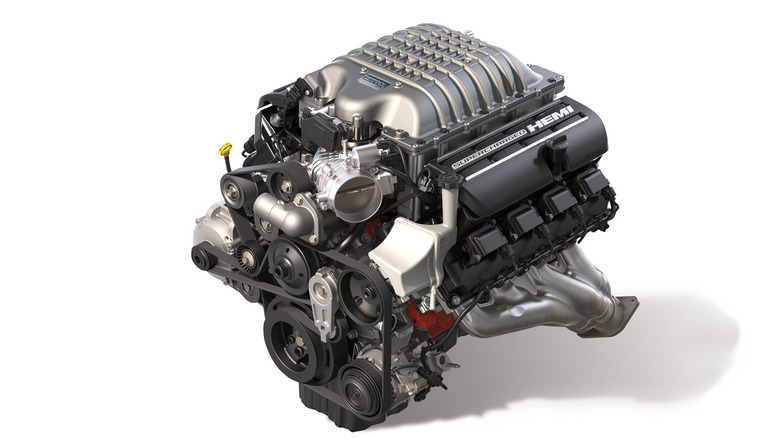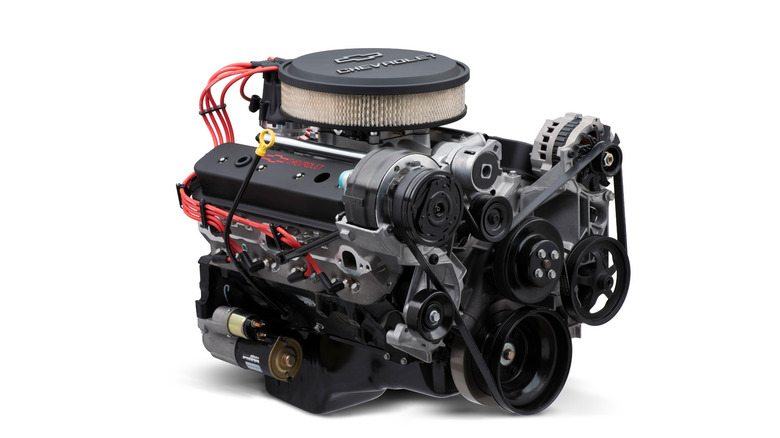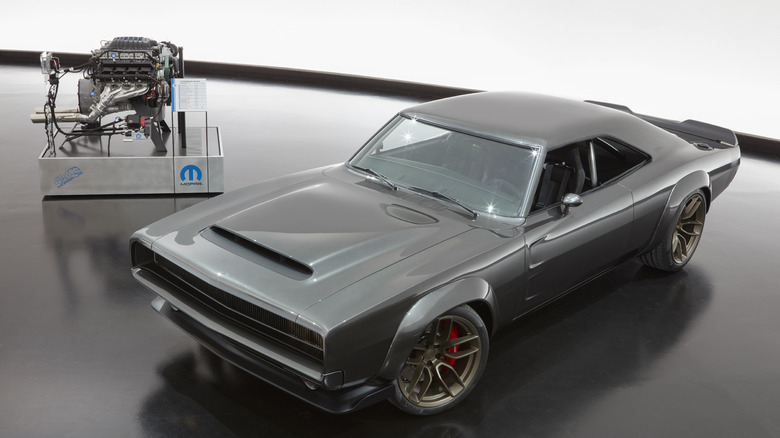Everything You Should Know About Crate Engines
To the uninitiated, modifying and building cars can seem little more than huge expensive Lego sets, but it couldn't really be further from the truth. Unless you are rebuilding a car back to factory specifications with factory parts, it's rarely a case of plug and play when it comes to parts of any sort. Be it body panels, glass, or mechanical drivetrain components. When bringing a Craigslist barn find project back to life, or restoring a classic, the engine is likely the first thing you have to consider. Depending on the engine choice, there are a myriad of engine options you can choose from, occasionally, as is the case with the Chevy Small Block, you can even find engine assemblies still made by General Motors, decades after it stopped producing the cars where it was original equipment. These engine assemblies are referred to as "crate engines."
Crate engines can be daunting, and there are a lot of dos and don't when picking the perfect powerplant for your project car. Fortunately, with a little bit of knowledge on what to look for, crate engines can lose a little bit of the mystery.
A myriad of options
The name "crate engine" doesn't carry a lot of mystique. It mostly refers to the fact that engine assemblies are shipped in a wooden crate. A Chevy Small Block, for instance, can weigh over 500 pounds with all the accessories. An engine coming in an average cardboard box isn't really feasible.
As for what a crate engine actually includes, that's up to you (and your wallet). Crate engines can range from bare-bones assemblies that are just the engine block, pistons, and the valvetrain, or it can be an entire engine with all accessories including a transmission. General Motors refers to these engines as "Connect and Cruise" as they can theoretically be dropped into the engine bay of any classic GM and be ready to run without an undo number of runs to the auto parts store.
Restoring a classic car to a running and driving state is a popular use for a crate engine. But a crate motor can also be used to modernize an older car with new power. Such is the case with Mopar's (the parts division of Stellantis) Hellcat crate engines. Instead of trawling junkyards all over the country to find a wrecked Dodge Challenger Hellcat to pry the engine out of, you can buy an entire supercharged 6.2-liter V8 right from the factory. It's even called the "Hellcrate" as subtlety is not Dodge's strong suit.
What to know before wrenching.
It's important to note that, unless you are a professional fabricator or own a perfect working recreation of an automotive assembly line from the 1960s, dropping any crate engine into any car likely can't be done in a single afternoon. Crate engines are not magical new powerplants that need no time and planning to get working. Installing a new 440 cubic inch V8 crate engine into a 1969 Dodge Charger might be relatively straightforward, but engines are incredibly complex and it typically involves a lot of adjustment and refitting before you can start burning rubber in a mechanically sound way. And that's with a car an engine that were designed to run together.
Installing the aforementioned Hellcrate engine in something like an old Honda Accord or even a muscle car from another brand, while certainly possible with enough angle grinders and the prerequisite amount of swearing, it is absolutely not a process anyone would call "easy." Before buying a crate engine, make sure you are either skilled enough and possess the proper tools to make it work, or buy an engine that was a contemporary or an upgrade of the car it's going in.
Other than that, crate engines can be a fantastic way to revive a car. New parts have warranties, active customer service, a litany of build guides right from the manufacturer and most are guarantied to run. The same can't be said about the engine you pulled out of the woods, even if it is cheaper.


